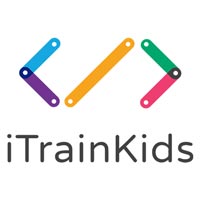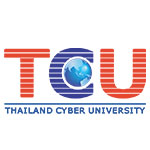Dec 05 | 2019
Education and training are often earmarked as Asia’s largest exports to the global market.
With this in mind, it should come as no surprise that the demand for EdTech in Asia continues to make great strides forward.
When it comes to the growth in demand for EdTech in Asia, it looks to be an unstoppable force. As the mobile penetration rate continues to grow, and internet access becomes more affordable, we are seeing more and more EdTech start-ups mark their place in this area of the education sector.
In addition, this region is seeing a continual advance in parents’ willingness and ability to pay for education – particularly those who send their children to international schools. This willingness comes not only for formal education in the classroom, but also in supplementary education materials including personalised tutoring and extra-curricular support.
These factors, paired with the fact that EdTech provides a way to gamify education and hold a child’s attention, have seen Asia experience the fastest growth in investments in this sector. The US previously led the pack in terms of investment. Now, data from TechCrunch reports that the APAC region is expected to represent 54% of the global EdTech market by 2020.
The demand for EdTech in Asia has seen a rise in the number of start-ups securing their place within the industry. A major driving force in Asia is the high value that parents attach to education in the region, which results in a higher willingness to pay for education and any supplementary materials.
It is reported that there are now more EdTech unicorns in Asia – primarily in China – than any other countries and continents. Furthermore, there are now roughly three thousand EdTech companies headquartered in Beijing, a city now seen as a greater source of EdTech start-ups than the Bay Area in San Francisco.
South East Asia’s rise in international schools has played a part in the demand for further education technologies – with international schools reportedly spending ten times more on technology per student than an average US or European state school.
Despite this, one of the greater challenges in Asia is how to provide quality education to the millions of students who demand it in such diverse geographical areas – from the big cities of Singapore and Bangkok to the remote areas in Vietnam and Laos. EdTech, in its agile and disruptive nature, provides a solution that can help to improve school systems in all areas of Asia – at least, that’s the idea.
“The latest EdTech development in Asia has seen platforms that are able to successfully engage learners at scale,” says Stanley Han, founder and CEO of KooBits, an app helping to teach the Singaporean math curriculum. “As a result, these students’ learning is becoming self-directed and collaborative in nature. Teachers benefit from such platforms because their time is freed up to do more important coaching and mentoring.”
There is such a demand for EdTech in Asia, as well as on a global scale, because of the myriad benefits for learners and educators. These, as we know, often come back to EdTech’s ability to provide a personalised learning experience to a student.
Microsoft has previously identified five ways that technology can help to deliver this personalised learning.
These are:
1. It Improves understanding by encouraging active participation and strategic thinking
2. Technology promotes collaboration to help process new information and build on prior knowledge
3. It creates relevance in learning for better transfer and retention of knowledge
4. It can take into consideration developmental and individual differences
5. Technology allows you to set goals to encourage self-regulation and reflection for motivated leaders.
To be part of Bett Asia 2020 – where 2,600 government figures, teachers and education leaders come together under one roof – enquire about participation options here.
Asian demand for Education Technology
When it comes to the growth in demand for EdTech in Asia, it looks to be an unstoppable force. As the mobile penetration rate continues to grow, and internet access becomes more affordable, we are seeing more and more EdTech start-ups mark their place in this area of the education sector.
In addition, this region is seeing a continual advance in parents’ willingness and ability to pay for education – particularly those who send their children to international schools. This willingness comes not only for formal education in the classroom, but also in supplementary education materials including personalised tutoring and extra-curricular support.
These factors, paired with the fact that EdTech provides a way to gamify education and hold a child’s attention, have seen Asia experience the fastest growth in investments in this sector. The US previously led the pack in terms of investment. Now, data from TechCrunch reports that the APAC region is expected to represent 54% of the global EdTech market by 2020.
Start-ups going full throttle
The demand for EdTech in Asia has seen a rise in the number of start-ups securing their place within the industry. A major driving force in Asia is the high value that parents attach to education in the region, which results in a higher willingness to pay for education and any supplementary materials.
It is reported that there are now more EdTech unicorns in Asia – primarily in China – than any other countries and continents. Furthermore, there are now roughly three thousand EdTech companies headquartered in Beijing, a city now seen as a greater source of EdTech start-ups than the Bay Area in San Francisco.
EdTech knows no borders
South East Asia’s rise in international schools has played a part in the demand for further education technologies – with international schools reportedly spending ten times more on technology per student than an average US or European state school.
Despite this, one of the greater challenges in Asia is how to provide quality education to the millions of students who demand it in such diverse geographical areas – from the big cities of Singapore and Bangkok to the remote areas in Vietnam and Laos. EdTech, in its agile and disruptive nature, provides a solution that can help to improve school systems in all areas of Asia – at least, that’s the idea.
“The latest EdTech development in Asia has seen platforms that are able to successfully engage learners at scale,” says Stanley Han, founder and CEO of KooBits, an app helping to teach the Singaporean math curriculum. “As a result, these students’ learning is becoming self-directed and collaborative in nature. Teachers benefit from such platforms because their time is freed up to do more important coaching and mentoring.”
Making educationa personal
There is such a demand for EdTech in Asia, as well as on a global scale, because of the myriad benefits for learners and educators. These, as we know, often come back to EdTech’s ability to provide a personalised learning experience to a student.
Microsoft has previously identified five ways that technology can help to deliver this personalised learning.
These are:
1. It Improves understanding by encouraging active participation and strategic thinking
2. Technology promotes collaboration to help process new information and build on prior knowledge
3. It creates relevance in learning for better transfer and retention of knowledge
4. It can take into consideration developmental and individual differences
5. Technology allows you to set goals to encourage self-regulation and reflection for motivated leaders.
Bett Asia: bringing the future of EdTech to you, today
To be part of Bett Asia 2020 – where 2,600 government figures, teachers and education leaders come together under one roof – enquire about participation options here.

.png?width=423&height=100&ext=.png)





.png?ext=.png)




















